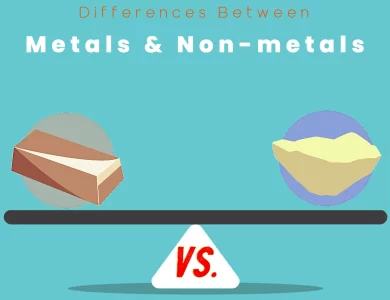Inorganic Chemistry
Welcome to our comprehensive category page dedicated to the intriguing realm of inorganic chemistry! Here, we dive deep into the differences in terms and other fascinating aspects of this captivating branch of science. Whether you’re a curious learner, a student studying chemistry, or an enthusiastic researcher, this is your go-to resource for unraveling the intricacies of inorganic chemistry.
Inorganic chemistry, a subfield of chemistry, focuses on the study of inorganic compounds that do not contain carbon-hydrogen (C-H) bonds. Instead, it delves into the vast array of compounds comprising metals, nonmetals, and their interactions. From the exploration of elements and periodic trends to the understanding of chemical reactions and their applications, inorganic chemistry offers a wealth of knowledge waiting to be explored.
-

Salt (Sodium Chloride) vs MSG (Monosodium Glutamate)
Embarking on a culinary journey means embracing a world of flavors and textures. In the realm of taste transformation, two essential ingredients, MSG and salt, hold distinct roles that shape the art of cooking. Monosodium Glutamate (MSG), often misunderstood due to myths, is a flavor enhancer that elevates specific tastes, particularly the umami sensation. This compound, composed of sodium and glutamate, doesn't alter textures directly but crafts a harmonious symphony of flavors. On the other hand, salt, the ubiquitous ingredient, enhances overall taste perception while playing a crucial role in altering textures. Its sodium and chlorine composition infuses dishes with the much-loved saltiness that tantalizes our palates. From a health perspective, moderation is essential when using both MSG and salt. Scientific research supports the safety of MSG in moderate quantities, debunking past misconceptions. In contrast, excessive salt intake has been linked to health issues such as high blood pressure. Understanding their distinctive culinary applications is key. While MSG shines in umami-rich dishes, salt's prowess is evident in various cuisines, both sweet and savory. In the modern culinary landscape, MSG's complex enhancement of flavors pairs with salt's multifaceted contributions, resulting in dishes that captivate not only the taste buds but also the imagination. A pinch of knowledge about these two ingredients allows culinary enthusiasts to master the art of seasoning, transforming everyday meals into gastronomic delights.
-

Mixture vs Compound
In the realm of chemistry, compounds and mixtures stand as two distinct characters, each contributing its unique essence to the intricate tapestry of matter. Compounds are the results of chemical unions, where elements intertwine through strong bonds to form entirely new substances. These compounds often exhibit properties that set them apart from their individual constituents. Water (H₂O), for instance, showcases the remarkable transformation of hydrogen and oxygen gases. Mixtures, on the other hand, celebrate diversity in a vibrant medley. They involve the physical blending of elements or compounds without altering their fundamental identities. Think of a colorful salad – each ingredient retains its taste and texture, contributing to the overall ensemble. Unlike compounds, mixtures do not involve chemical bonding, allowing their components to interact without undergoing transformations. Exploring the differences between compounds and mixtures unveils a world of composition variations, separation techniques, and unique applications. While compounds adhere to fixed proportions and often require chemical reactions for separation, mixtures offer the flexibility of variable ratios and simpler physical separation methods. The distinctions also extend to properties, interactions, and the roles they play in various industries and everyday scenarios. Whether you're a student, scientist, or simply curious about the intricacies of matter, understanding the contrast between compounds and mixtures opens the door to a deeper appreciation of the chemical world's richness.
-

Non-Metals vs Metals
Welcome to a captivating journey through the captivating realms of metals and non-metals. In this blog, we'll uncover the secrets behind these elemental entities and explore their unique properties, applications, and significance in our everyday lives. From the shiny brilliance of metals to the versatile characteristics of non-metals, we'll delve into their distinct attributes that shape our physical world. Metals, with their characteristic metallic luster, exceptional strength, and conductivity, find applications in construction, transportation, electronics, and jewelry. Meanwhile, non-metals, which lack the metallic luster, exhibit diverse properties and play vital roles in healthcare, energy production, agriculture, and beyond. We'll delve into their contrasting physical and chemical properties, from malleability and ductility to their reactivity and bonding characteristics. Join us on this captivating adventure as we explore the interplay between metals and non-metals, their impact on our environment, and the importance of sustainable practices. We'll unravel the mysteries behind their extraction, production, and disposal, while highlighting the efforts being made to minimize their environmental footprint. By the end of this blog, you'll gain a deeper understanding of how metals and non-metals shape our world and the steps we can take to foster a more sustainable future. So, get ready to embark on a journey through the wonders of metals and non-metals, where shimmering brilliance and versatile properties await. Let's delve into the captivating world of elements and expand our knowledge of these fundamental components that surround us.


